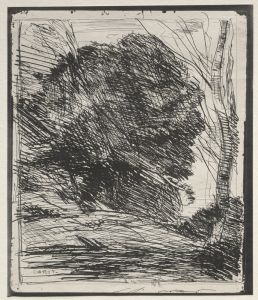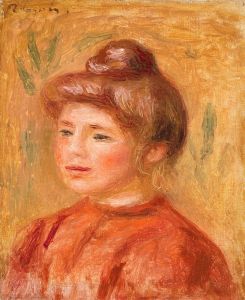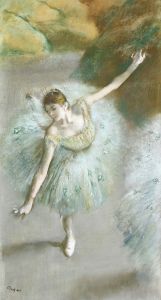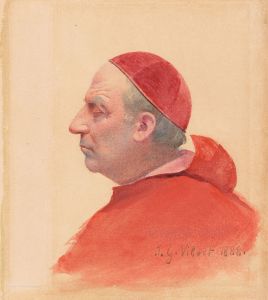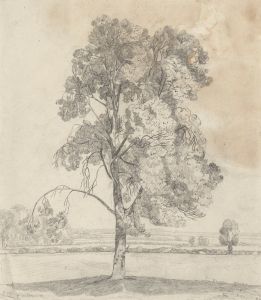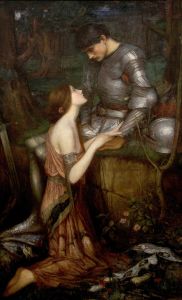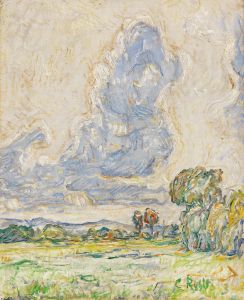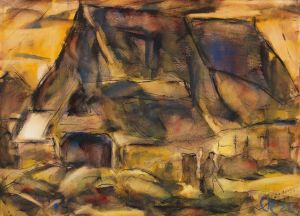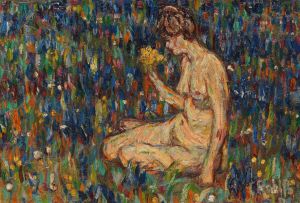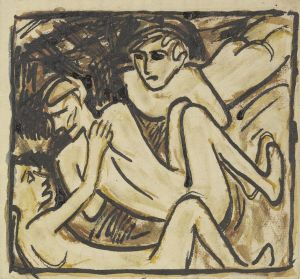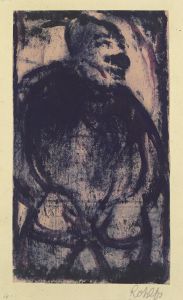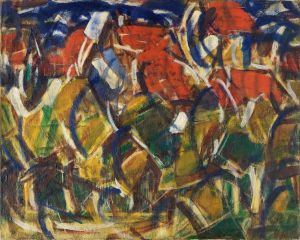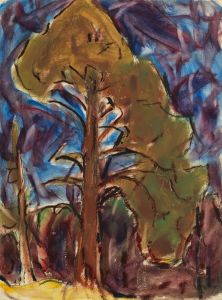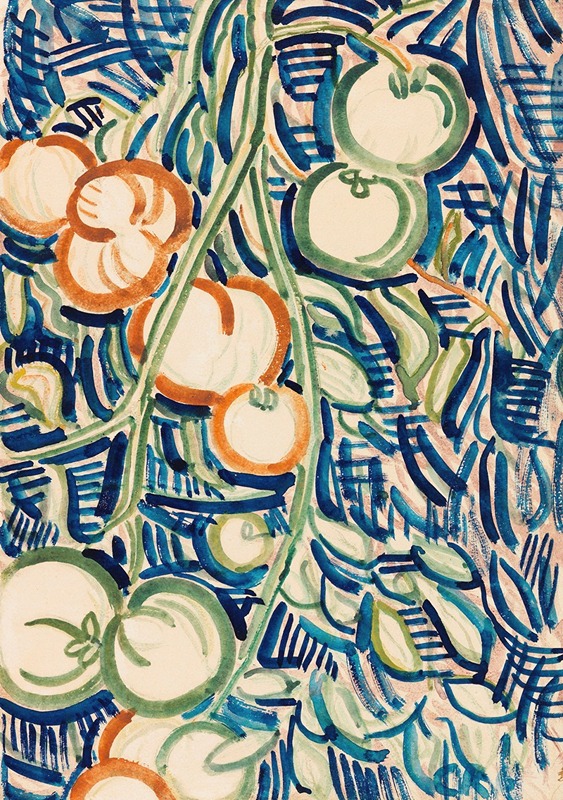
Herabhängender Zweig mit roten und grünen Tomaten
A hand-painted replica of Christian Rohlfs’s masterpiece Herabhängender Zweig mit roten und grünen Tomaten, meticulously crafted by professional artists to capture the true essence of the original. Each piece is created with museum-quality canvas and rare mineral pigments, carefully painted by experienced artists with delicate brushstrokes and rich, layered colors to perfectly recreate the texture of the original artwork. Unlike machine-printed reproductions, this hand-painted version brings the painting to life, infused with the artist’s emotions and skill in every stroke. Whether for personal collection or home decoration, it instantly elevates the artistic atmosphere of any space.
Christian Rohlfs was a prominent German painter associated with the Expressionist movement, known for his vibrant use of color and dynamic compositions. One of his notable works is "Herabhängender Zweig mit roten und grünen Tomaten" (Hanging Branch with Red and Green Tomatoes). This painting exemplifies Rohlfs' mature style, characterized by bold colors and a focus on natural forms.
Rohlfs was born on December 22, 1849, in Groß Niendorf, Germany. He initially studied at the Grand Ducal Saxon Art School in Weimar, where he was influenced by the academic style of painting. However, his artistic direction changed significantly after he encountered the works of the Impressionists and Post-Impressionists. This exposure led him to explore more avant-garde styles, eventually aligning himself with the Expressionist movement.
"Herabhängender Zweig mit roten und grünen Tomaten" is a testament to Rohlfs' fascination with nature and his ability to capture its essence through expressive brushwork and color. The painting depicts a branch laden with tomatoes, rendered in a way that emphasizes the vibrancy and vitality of the subject. The use of red and green creates a striking contrast, highlighting the ripeness of the tomatoes against the lush greenery of the leaves.
Rohlfs' technique in this painting reflects his broader artistic philosophy, which sought to convey emotion and mood through color and form rather than through realistic representation. This approach was in line with the principles of Expressionism, which prioritized the artist's subjective experience and emotional response over objective reality.
Throughout his career, Rohlfs was associated with several key art movements and groups. He was a member of the Berlin Secession, a group of artists who broke away from the traditional art institutions in Germany to pursue more modern and innovative approaches to art. His work was also exhibited alongside that of other Expressionists, including Emil Nolde and Ernst Ludwig Kirchner.
Despite his contributions to modern art, Rohlfs' career faced challenges during the rise of the Nazi regime in Germany. His work was labeled as "degenerate art" by the Nazis, and many of his paintings were removed from public collections. However, Rohlfs continued to paint privately until his death on January 8, 1938, in Hagen, Germany.
Today, Christian Rohlfs is recognized as a significant figure in the development of modern art in Germany. His works, including "Herabhängender Zweig mit roten und grünen Tomaten," are celebrated for their innovative use of color and their ability to convey the beauty and dynamism of the natural world. Rohlfs' legacy is preserved in numerous art collections and museums, where his paintings continue to inspire and captivate audiences with their expressive power and vivid imagery.





